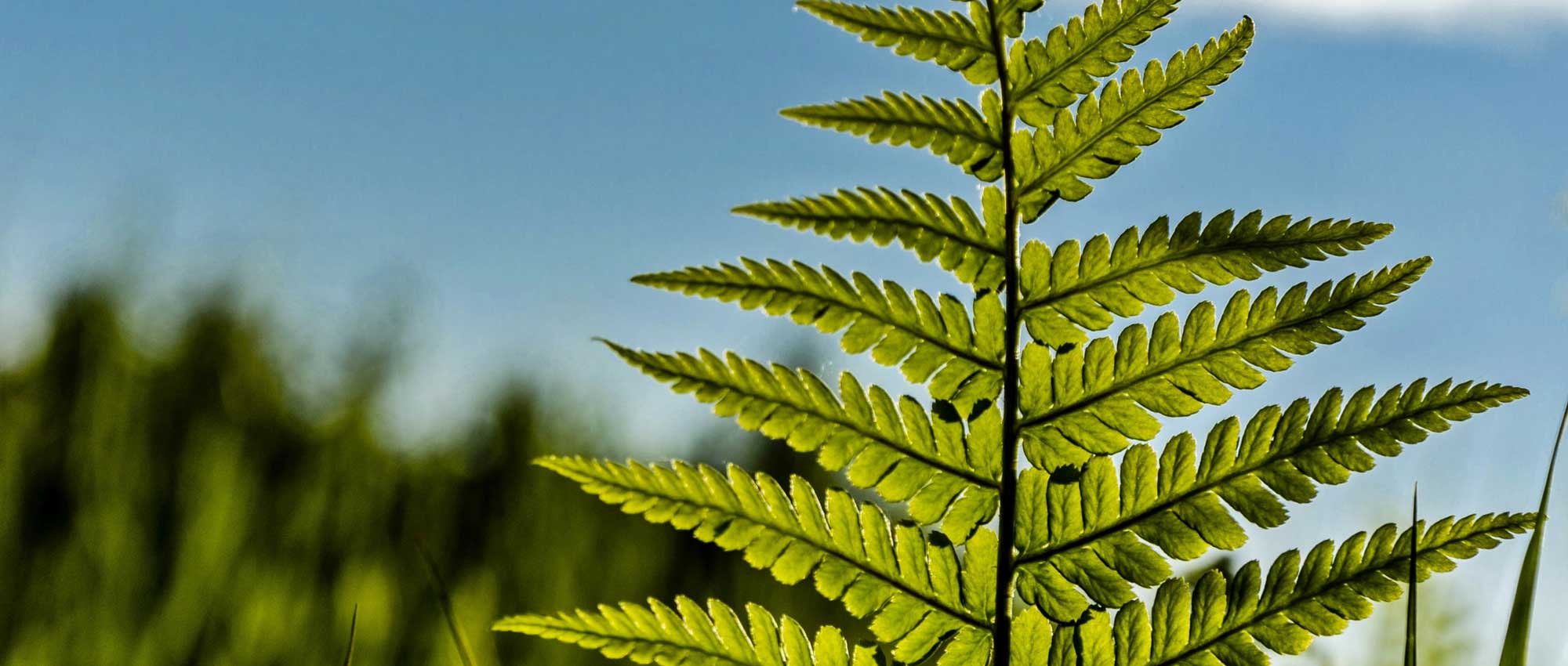
Ferns: how to choose them?
depending on your situation and desires!
Contents
Ferns are plants with particularly elegant foliage, sometimes decorative all year round! Lacking flowers and seeds, they truly form a distinct group. They are distinguished by their superb graphic quality, due to their slender and finely divided fronds. They immediately bring a sense of freshness to the garden!
Ferns offer a true diversity… Between deciduous species, evergreens, those with coloured fronds, small carpeting species, and large exuberant ferns, it can be quite challenging to navigate! To choose a fern, consider the growing conditions, the nature of your soil, and the exposure. Do you want a fern to dress the base of some trees, to green a wall or a pond bank? Are you looking for an exuberant fern, or a small carpeting one? Do you have plenty of space? Do you wish to grow it in a pot or in the ground?
Fortunately, ferns are so diverse that you will surely find one suited to your situation! While most prefer acidic soils, others thrive in calcareous ground. If they enjoy humidity, some also tolerate drought very well. Although nearly all species require shade, some can grow in full sun!
They serve various purposes and can be grown in woodland, in rockeries, at the edge of a pond, in pots, or even on a living wall! Discover our tips to make the right choice.
For what situation?
If most ferns thrive in cool, shaded, and slightly acidic soil, here are a few exceptions!
- In calcareous soil
You can check the pH of your soil with a soil analysis kit sold at garden centres. Adiantums prefer calcareous soils. For example, you might choose Adiantum capillus-veneris, which will charm you with the delicacy of its foliage. Aspleniums also appreciate calcareous substrates. These are small ferns, suitable for rockeries and capable of tolerating relative dryness. Discover the hart’s-tongue fern, Asplenium scolopendrium, with its entire and upright fronds. It will thrive in shade, possibly in a rockery. If you want a slightly more imposing fern, turn to Cyrtomium falcatum, Dryopteris filix-mas or Dryopteris erythrosora! These are more classic species, of medium size, that will easily find their place in a border. Be sure to avoid Blechnum spicant and the royal fern (Osmunda regalis), as they do not tolerate calcareous conditions!
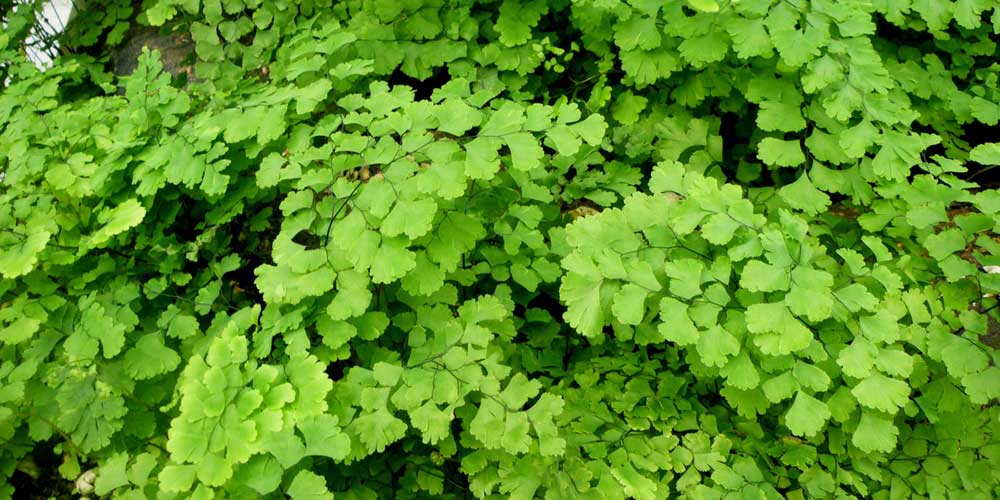
Adiantum capillus-veneris (photo Marija Gajić)
- In the sun
Although most ferns prefer shade, some species can tolerate sun as long as the soil remains cool. This is the case for Onoclea sensibilis, Dryopteris filix-mas, Osmundas or Matteuccias. In nature, they sometimes grow in open terrain. If your soil is dry, opt for Cheilanthes lanosa. You might install it on a sunny rockery alongside blue fescue. You can also plant Asplenium ceterach on a sunny wall.
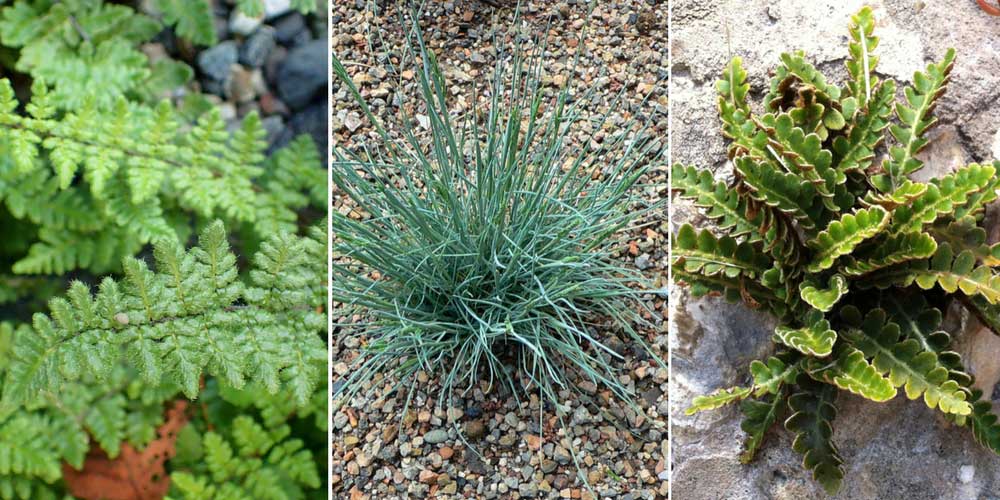
You can create a sunny rockery with Cheilanthes lanosa (photo Krzysztof Ziarnek), Festuca glauca (photo Raul654) and Ceterach officinarum (photo Muriel Bendel)
- In dry soil
It would be a shame to think that dry soil does not allow for fern cultivation. The species best suited to drought is Cheilanthes lanosa. It can even tolerate sun! Also discover Asplenium trichomanes and Polypodium vulgare, which are small ferns, not very demanding, capable of growing with little soil. You can even install them on walls. As for the male fern (Dryopteris filix-mas), it tolerates drought if planted in shade. Polystichum setiferum and cyrtomiums can withstand temporary droughts. The Cyrtomium falcatum has beautiful foliage, light green then dark green, with relatively few lobes.
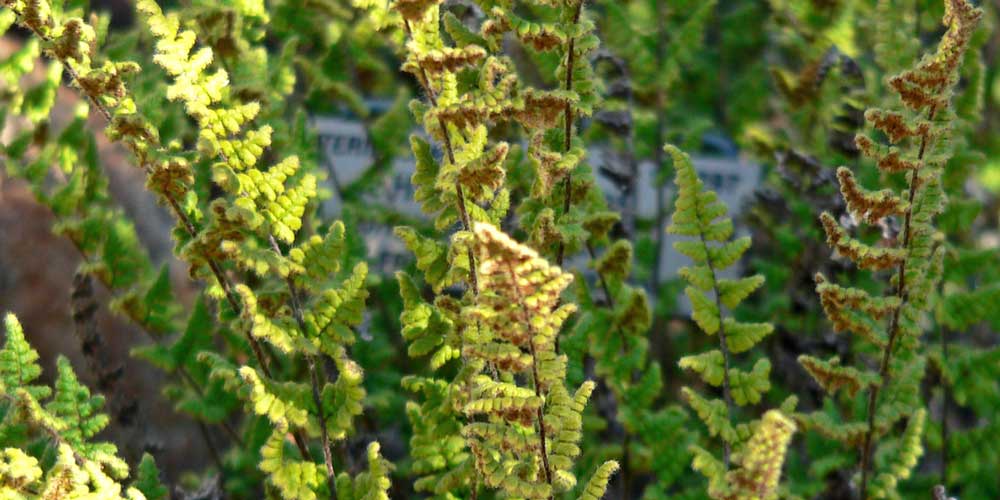
Cheilanthes lanosa (photo Stan Shebs)
- In constantly moist soil
Osmundas, Athyrium, Onoclea sensibilis and Adiantum pedatum appreciate soils that remain moist. Athyriums are fairly classic ferns of intermediate size. Some varieties offer decorative foliage with original colours, such as the silver and purple fronds of Athyrium niponicum ‘Pictum’. Osmundas are tall and majestic plants, while Onoclea sensibilis is a small creeping fern. Finally, Adiantum pedatum is remarkable for its very fine and lobed foliage. So, if your soil is particularly moist, even marshy, and other plants struggle to grow there, take advantage of it… you will easily find a fern to occupy that space! These ferns will also thrive at the edge of a pond.

Adiantum pedatum (photo Stan Shebs)
Read also
Planting fernsFor what visual effect?
- To enjoy even in the middle of winter!
Choose evergreen ferns to enjoy their graphic foliage all year round! We recommend Dryopteris erythrosora or Polystichum polyblepharum. These are large ferns with finely divided fronds that will make a stunning impact in a border or as a specimen. Fall for the superb foliage of Dryopteris erythrosora, which changes colour over time! You can also choose smaller ferns, such as Asplenium trichomanes, Asplenium scolopendrium, or Polypodium vulgare. Most aspleniums are evergreen.
Avoid Athyrium, osmunda, or Adiantum pedatum!
 Dryopteris erythrosora and Polystichum polyblepharum
Dryopteris erythrosora and Polystichum polyblepharum
-
- For colourful foliage!
Indeed, fern fronds are not necessarily green: although less common, some ferns take on other hues. Be surprised by the remarkable foliage of Athyrium niponicum! The variety ‘Pictum’ features silver fronds tinged with purple, while those of ‘Ursula’s Red’ create a beautiful contrast with a dark burgundy band in the centre of the frond, and the rest of the frond is silver. As for Dryopteris erythrosora, it boasts splendid foliage that changes hue: the fronds are initially pink when young, then turn bronze and finally green. Dryopteris lepidopoda offers one of the most beautiful foliages: its young fronds are golden orange and tinged with red! The small Asian fern Athyrium otophorum var. okanum has cream-yellow fronds when young, providing a stunning contrast with its purple veins!
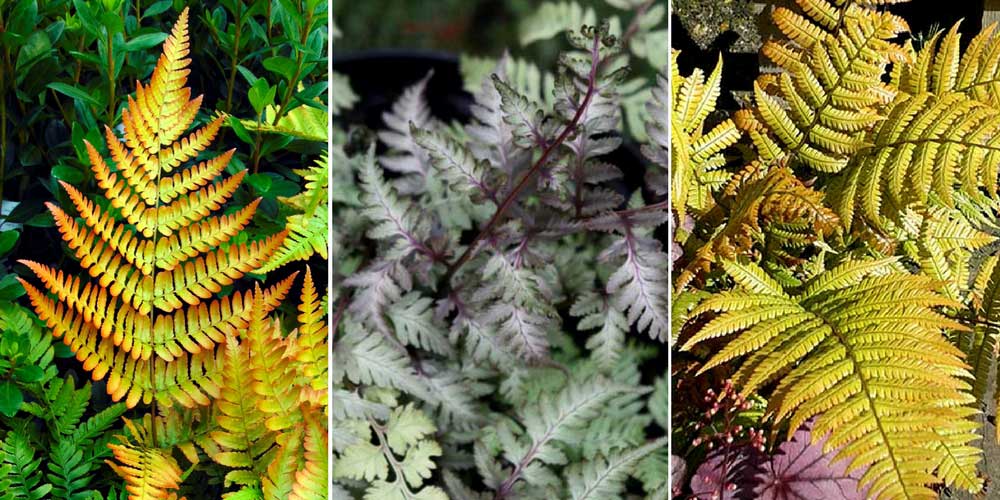 Dryopteris erythrosora, Athyrium niponicum ‘Pictum’ and Dryopteris lepidopoda[/caption>
Dryopteris erythrosora, Athyrium niponicum ‘Pictum’ and Dryopteris lepidopoda[/caption>
-
- A majestic fern for a large garden!
The largest ferns create a truly impressive display! With their upright habit, Matteuccia are particularly elegant. They often measure between 1 m and 1.6 m. As for osmunda, they can sometimes reach two metres in height! Plant them in cool soil, possibly at the edge of a pond. A bit smaller, dryopteris can reach 1.3 m in height, with almost the same width. In contrast, polystichums often have a more spreading than upright habit. Also avoid aspleniums, as they are ferns that remain small.
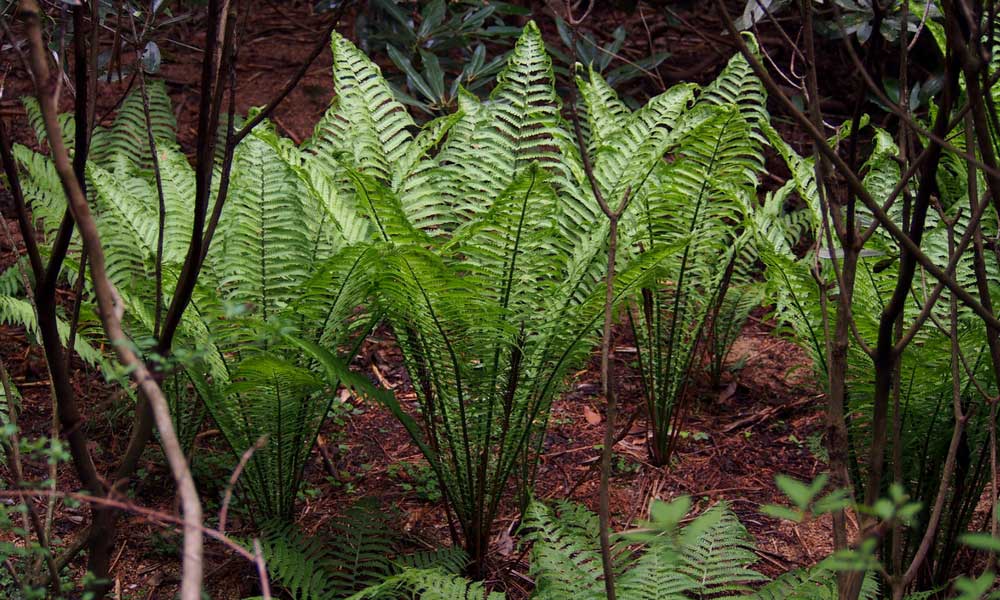 Matteuccia struthiopteris[/caption>
Matteuccia struthiopteris[/caption>
-
- A small fern as ground cover
Spreading ferns make remarkable ground covers. They are perfect for dressing the base of trees or as borders in beds. For very bright and colourful foliage, choose Onoclea sensibilis! It forms a superb carpet of fronds that spreads widely. You can also opt for polypodies (for example Polypodium vulgare). They are less original, a bit more classic, but very cute with their small triangular fronds!
 Onoclea sensibilis (photo C. T. Johansson)
Onoclea sensibilis (photo C. T. Johansson)
Discover other Ferns
View all →Available in 1 sizes
Available in 1 sizes
Available in 1 sizes
Available in 1 sizes
Available in 2 sizes
Available in 2 sizes
Available in 2 sizes
Available in 1 sizes
Available in 2 sizes
Available in 2 sizes
For what purpose?
- At the back of a border
Choose large ferns, such as Dryopteris, Matteuccia, or Polystichum. They create a stunning backdrop, with a green that highlights the flowering and colours of the plants you place in front. Opt for Matteuccia struthiopteris for its upright and elegant habit, or Dryopteris filix-mas. Positioned against a wall at the back of a border, their graphic form will stand out beautifully!
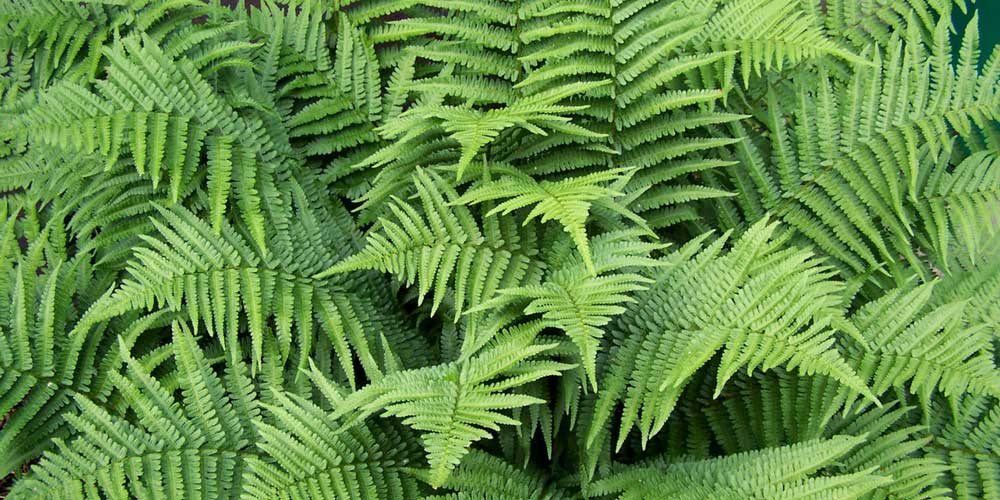
At the back of a border, choose from large ferns. Here, the male fern, Dryopteris filix-mas.
- In a rockery
Incorporate ferns into a cool, shaded rockery! Growing spontaneously between rocks or on walls, hart’s tongue fern (Phyllitis scolopendrium) and aspleniums are particularly suited to these growing conditions. These are small ferns that do not take up much space. Discover Asplenium trichomanes, a small fern with linear fronds.
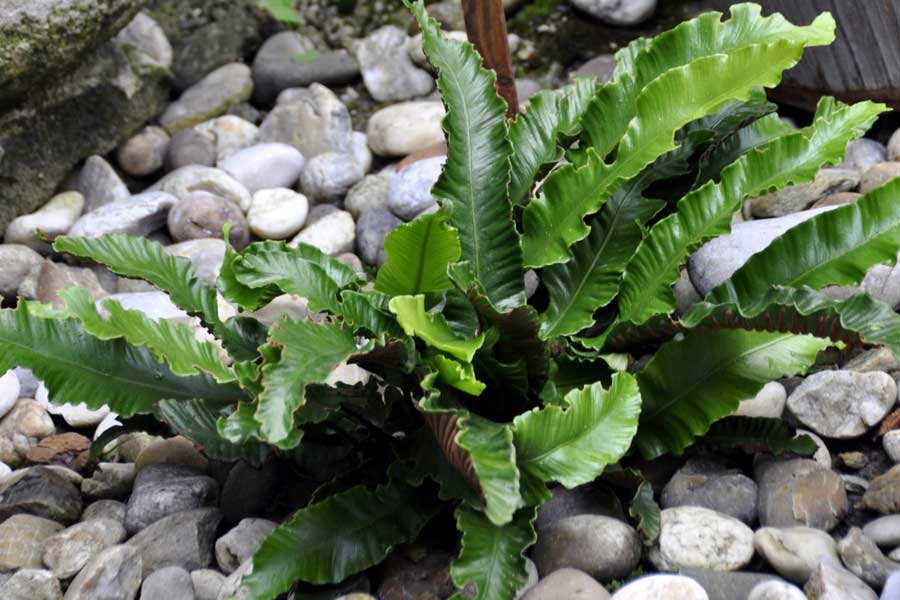
Asplenium scolopendrium
- By the edges of a pond
Osmundas and Matteuccia will thrive by the edges of a pond, as they are found in nature along stream banks. Their lush foliage will create a stunning effect! They will add volume. We recommend choosing Osmunda regalis or Matteuccia struthiopteris. If you prefer a smaller, creeping fern, opt for Onoclea sensibilis. It will form a carpet of leaves in a beautiful bright yellow-green colour.
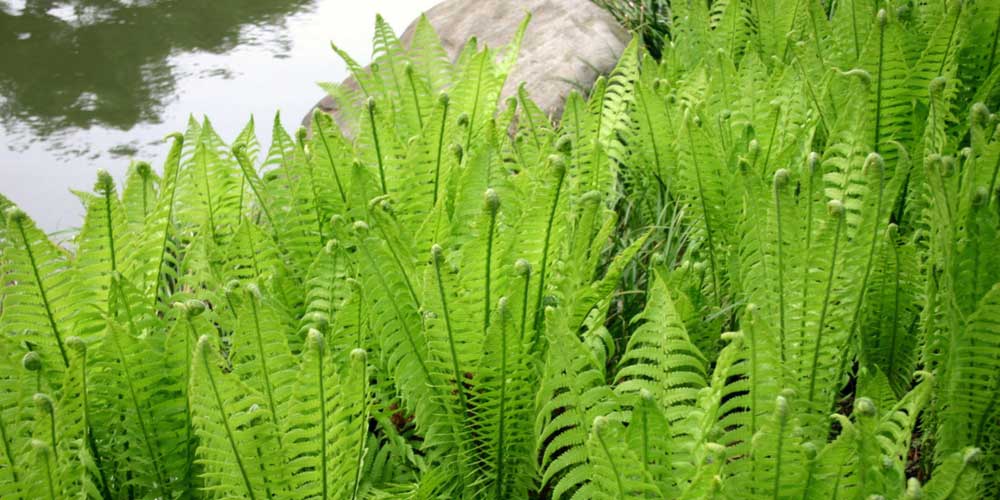
Matteuccia struthiopteris (photo Ryan Somma)
- On a wall
To green up a shaded wall, we recommend polypodies (Polypodium vulgare) or hart’s tongue ferns. If you prefer finer foliage, choose from the aspleniums. Most of them can grow on walls or in rockeries: for example, Asplenium trichomanes, Asplenium ceterach, and Asplenium ruta-muraria. If your wall is sunny, opt instead for Cheilanthes lanosa.
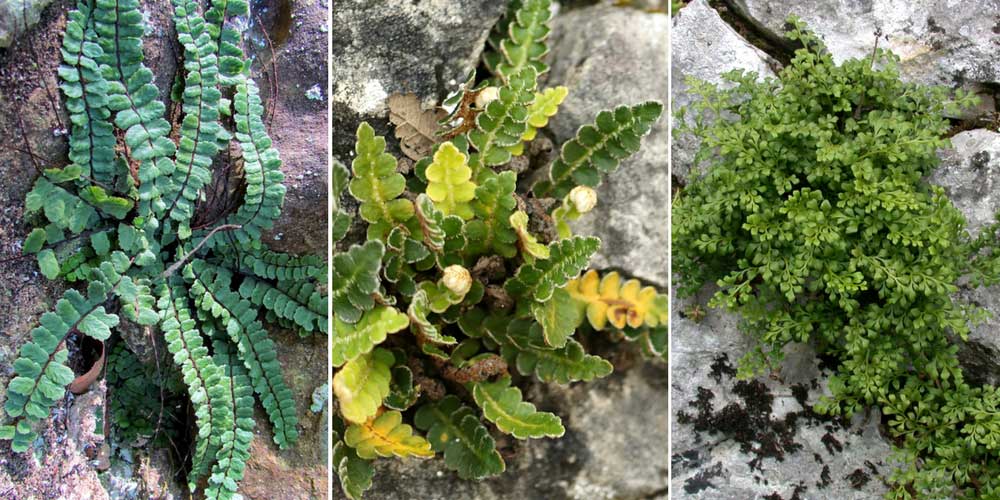
Asplenium trichomanes subsp. pachyrachis (photo Johan N), Asplenium ceterach (photo Hans Hillewaert), and Asplenium ruta-muraria (photo Muriel Bendel)
- Subscribe!
- Contents
































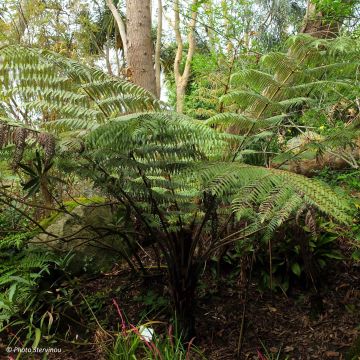
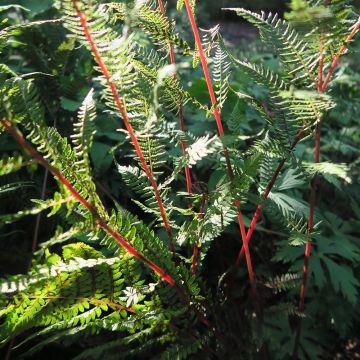
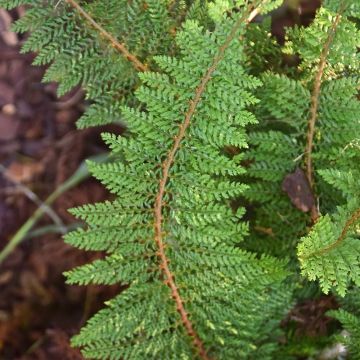
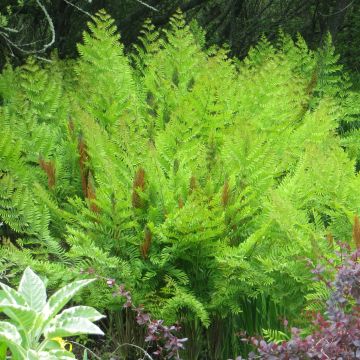
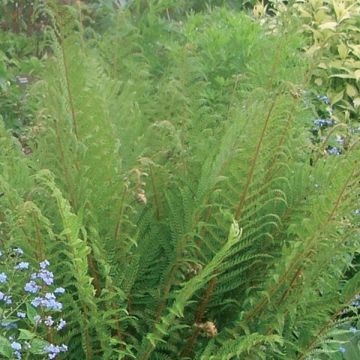
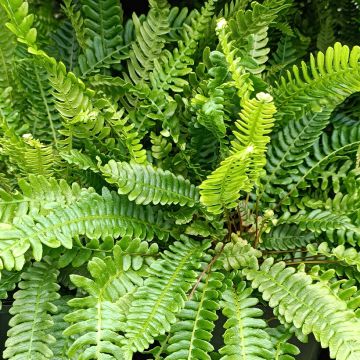
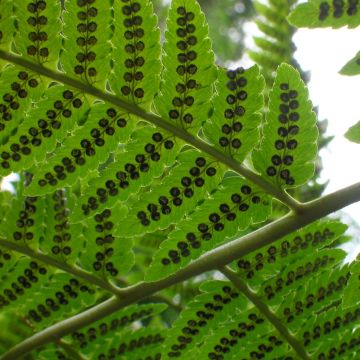
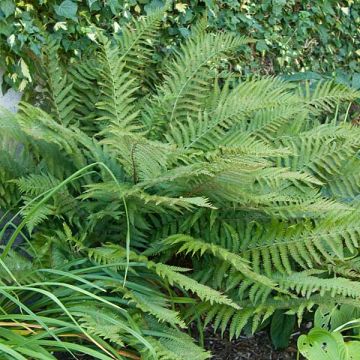

Comments